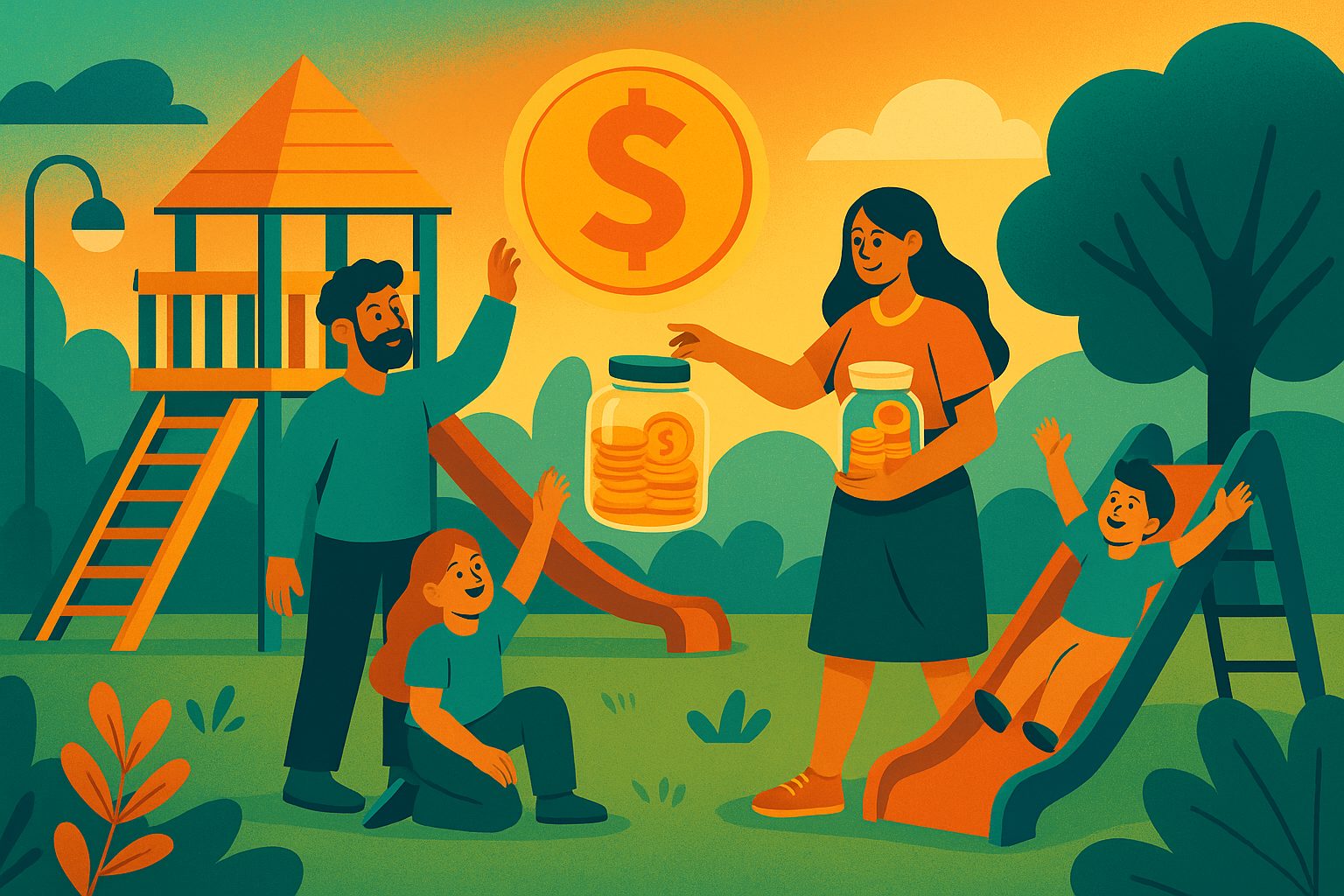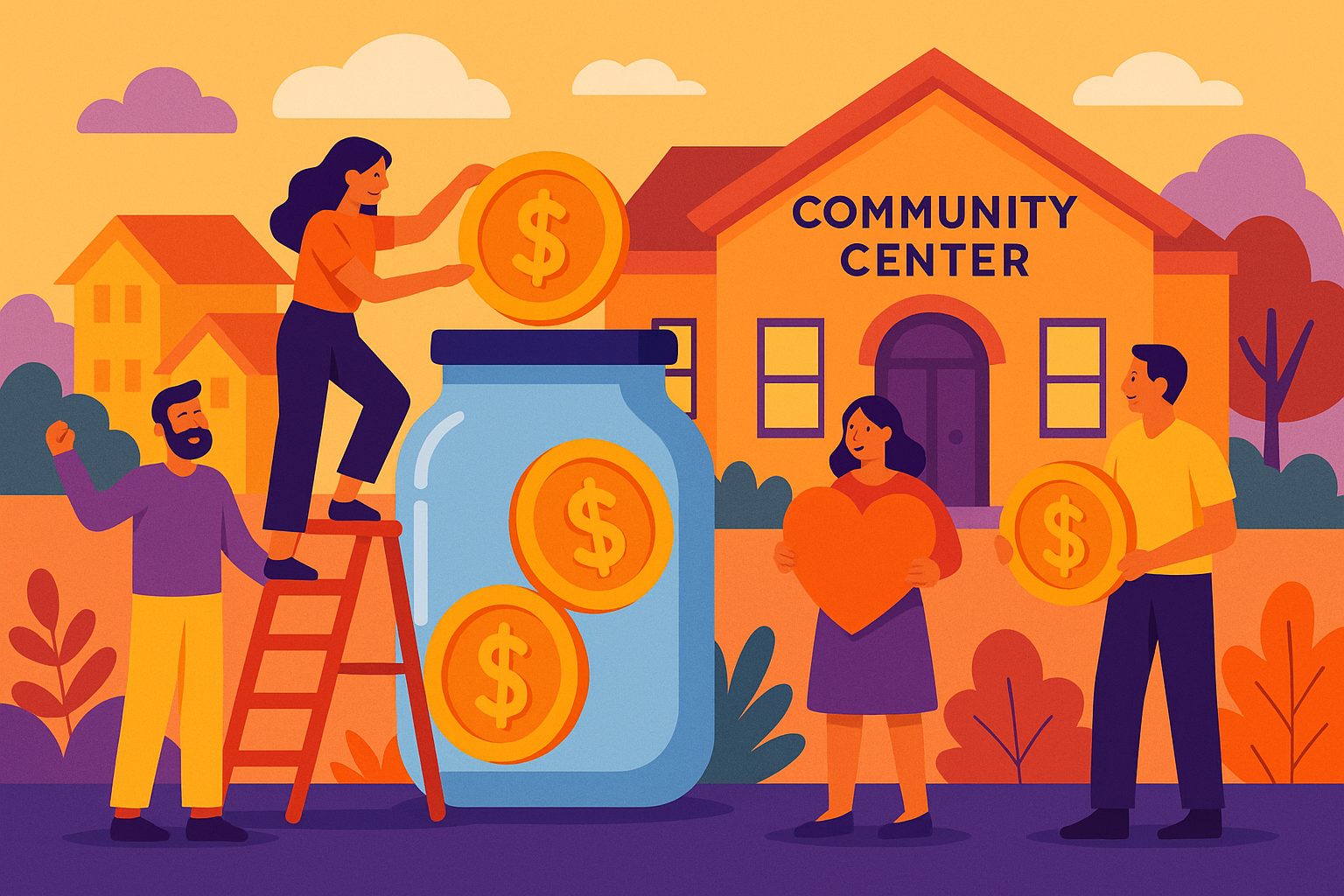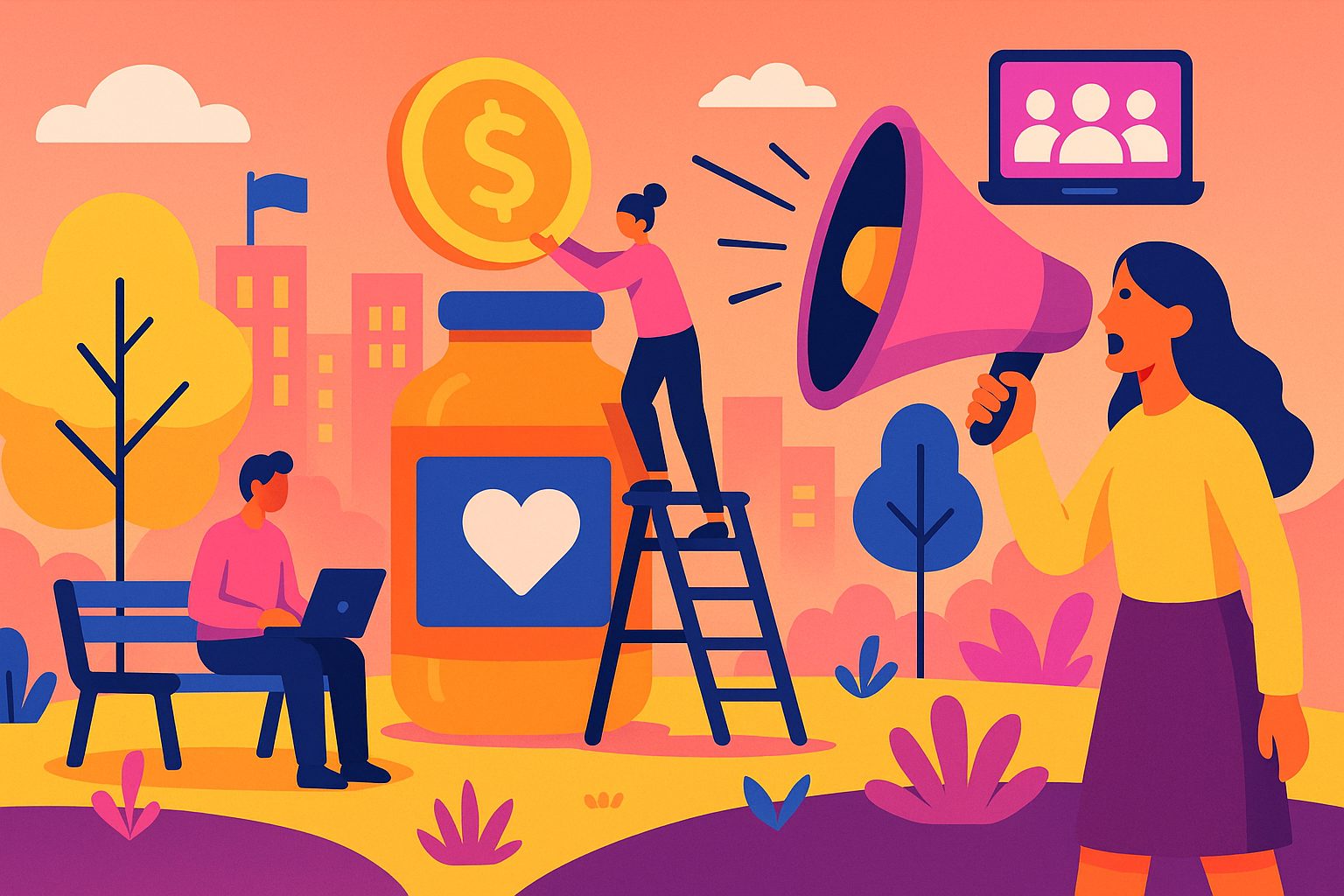A New Chapter for Local Playgrounds Begins With You
Across neighborhoods large and small, playgrounds have long been the beating heart of community life. They are more than just swings and slides—they are spaces where children grow, friendships form, and parents connect. But what happens when these vital spaces fall into disrepair? Fading paint, broken equipment, and outdated designs can turn joyful places into safety concerns. Fortunately, communities are discovering they don’t have to wait for government grants or years of city planning. They can take action themselves—together.
Residents across the country are coming together to fund and lead playground upgrades through the power of civic crowdfunding and grassroots organizing. By pooling small donations, rallying local support, and tapping into creative tools, neighborhoods are transforming underused or unsafe playgrounds into thriving, inclusive spaces that better serve their families. This movement isn’t just about new playsets—it’s about reclaiming ownership of public space, fostering stronger communities, and investing in the next generation.
Recognizing the Need and Sparking a Vision
It all starts with a simple observation. Maybe the slide is rusting, or the mulch has turned into mud. Perhaps the equipment is not accessible for all children, or there simply isn’t enough for older kids to do. Whatever the issue, the realization is the same: something needs to change. And the most powerful part? You’re not the only one who feels this way.
Before a single dollar is raised, a shared vision must take shape. Talk to other parents, caregivers, and teachers. Host a neighborhood walk-through or casual meetup at the site. Ask what the ideal playground would include. More shade? A sensory play zone? A basketball hoop for teens? As voices begin to align, the energy shifts from frustration to inspiration.
Having a clearly defined vision makes all the difference when it’s time to fundraise. When people can picture the outcome—children laughing on new structures, accessible swings welcoming all abilities, shaded benches for grandparents—they’re far more likely to support it. A shared dream is the first step toward a shared success.
Laying the Foundation for a Community-Led Campaign
Once the vision is clear, it’s time to build a roadmap. This phase involves research, coordination, and outreach. Start by identifying the current owners and decision-makers for the playground—often a school district, city parks department, or HOA. While you may be leading the charge, having their approval and guidance will help ensure your efforts move forward without roadblocks.
From there, reach out to local stakeholders who can strengthen your campaign: PTAs, community associations, neighborhood councils, youth sports leagues, and local nonprofits. These groups often have mailing lists, community reach, and potential funding avenues. Invite them to be part of your steering committee or advisory group. A diverse coalition brings not just more ideas, but more buy-in.
You’ll also want to explore what kind of upgrades are feasible within your space. Will it be a total replacement or a few strategic additions? Can existing equipment be repurposed or repaired? Consult with playground designers or vendors to get mock-ups, quotes, and compliance recommendations. This due diligence will give your campaign both structure and credibility.
Telling a Story That Moves People
Every successful playground campaign has a heartbeat—and that heartbeat is its story. Crowdfunding is not simply about asking for money; it’s about inviting people to be part of something meaningful. The story you tell must highlight both the current challenges and the brighter future your community can create together.
Start with the human side. Share a parent’s reflection on watching their child struggle to enjoy the outdated equipment. Highlight the way children play on the sidewalk because the playground lacks options. Include testimonials, photos, or even short videos that bring your case to life. Then paint a vivid picture of what’s possible: a bright, inclusive, dynamic space where kids can play safely and families can gather proudly.
This is where your storytelling truly becomes a fundraising engine. The more relatable and emotional your narrative is, the more likely people are to share it—and to act on it. It transforms your campaign from a transaction into a movement.
Choosing the Right Platform to Power Your Project
Crowdfunding success hinges on selecting the right platform to host your campaign. While sites like GoFundMe and Kickstarter are well known, platforms such as ioby, Patronicity, and Spacehive are specifically geared toward civic and neighborhood projects. These options often come with additional support services, such as coaching, campaign planning tools, and even access to city-backed matching funds.
Take time to evaluate what each platform offers in terms of fees, customization, communication tools, and local relevance. A good platform will help guide you through the fundraising process with confidence and give you the digital infrastructure needed to track donations, thank backers, and communicate updates.
It’s also worth exploring whether your city has any grant-matching programs or park partnerships that encourage civic-led fundraising. Some municipalities offer funding or planning assistance to communities willing to raise a portion of the project themselves. These matches can supercharge your momentum and open doors to greater support.
Building Momentum Before the Campaign Goes Live
The most successful playground crowdfunding campaigns don’t start on launch day—they start weeks or months earlier through intentional community building. This pre-launch phase is all about cultivating early champions and ensuring a strong foundation.
Reach out personally to families, educators, local business owners, and city officials who might contribute. Invite them to small preview events, share campaign teasers, or host volunteer days to clean or decorate the current playground. These pre-campaign efforts signal that something exciting is happening and create a sense of anticipation.
You’ll also want to line up early donors before going public. Seeing the campaign already in motion when it launches builds trust and inspires momentum. Consider reaching out to local businesses to commit to early sponsorships or “challenge grants” that unlock additional donations when goals are met.
And don’t forget your digital preparation. Build a library of social media posts, photos, videos, and shareable graphics. Create a content calendar to keep your message consistent and exciting throughout the campaign.
Launch Day and the Power of Local Energy
When launch day arrives, it’s your moment to shine—and to rally your community like never before. Make it feel like a celebration. Announce the campaign across all channels: email, social media, school newsletters, WhatsApp groups, bulletin boards, and local news outlets. Encourage your volunteers to share and personalize their own outreach messages.
Momentum is everything during the first few days. Highlight the number of donors, post milestone updates, and thank contributors publicly (with permission). Use video updates or short livestreams to give your campaign a human face. Let supporters see your passion and the real progress being made.
Community events during the campaign can also amplify support. Host a “Play for the Park” day, a local bake sale, or a neighborhood movie night with suggested donations. These gatherings not only raise funds but deepen community bonds. Every smile, handshake, and shared moment becomes part of the story your playground is telling.
Transforming Donors into Partners
One of the most powerful aspects of a resident-led playground campaign is the transformation of passive donors into active partners. Once someone gives, they feel connected. Tap into that energy by offering meaningful ways to stay involved.
Invite supporters to volunteer for build days, help with communications, or join site planning sessions. Give them roles in naming features of the playground or deciding on color schemes. These micro-participation moments deepen emotional investment and spread ownership across the community.
You can also create permanent recognition opportunities. Donor walls, engraved pavers, or painted handprints are great ways to say thank you while strengthening the emotional footprint of the space. These gestures make supporters feel remembered and appreciated long after the fundraising ends.
Navigating Construction and Bringing the Vision to Life
Once the funds are in place, the real fun—and real work—begins. Depending on the scale of your upgrades, the process may take several weeks or months. Work closely with the vendor, city officials, and any contractors to ensure that permits, inspections, and materials are secured on schedule.
Throughout this phase, communication remains key. Keep your supporters in the loop with regular updates, sneak peeks of construction, and shared progress photos. If you hit any bumps in the road—weather delays, material shortages, or budget adjustments—be transparent. Your community will appreciate honesty and stay committed to the outcome if they’re kept in the know.
Hosting volunteer build days, where safe and permitted, can dramatically reduce costs and deepen community pride. Watching a playground rise from the ground up with the help of neighbors is one of the most satisfying experiences in grassroots organizing.
Celebrating Completion and Setting the Tone for the Future
When the final bolt is tightened and the last swing is hung, it’s time to celebrate. Your community didn’t just raise funds—it raised expectations, transformed space, and created something lasting. Plan a grand opening that reflects the effort and heart behind the project. Include speeches, performances, snacks, and games. Make it a moment families will remember.
But don’t stop there. Your new playground also needs a sustainability plan. Who will check for wear and tear? Can you organize seasonal cleanups or add landscaping over time? Keeping the space beautiful and functional ensures the project remains a source of pride for years to come.
Ongoing stewardship could include forming a volunteer committee, partnering with local businesses for maintenance days, or holding annual fundraising drives for minor upgrades. With a little foresight, your playground becomes not just a single achievement but a long-term pillar of neighborhood life.
Sparking a Culture of Civic Engagement
Perhaps the greatest reward of a community-led playground project is the cultural shift it inspires. Once neighbors come together to upgrade a playground, they realize what else they can accomplish together. That momentum spreads. New ideas emerge—community gardens, walking trails, neighborhood festivals. What started with a swing set becomes a broader movement of civic engagement.
Children, too, absorb the lesson that change is possible. When they see adults in their community working together to build something just for them, it plants a deep sense of belonging and possibility. It tells them: your community cares, and your voice matters.
This kind of grassroots leadership can’t be mandated or manufactured—it has to be lived. And there’s no better place to begin than in the places where children play, learn, and dream.
From Sandbox to Solidarity: A Legacy Built Together
In the end, funding a playground upgrade together is about more than equipment—it’s about solidarity. It’s about proving that when neighbors unite, they can create safer, more joyful, and more connected places for their children to thrive. It’s about stepping up, showing up, and building a legacy not in steel or rubber mulch, but in memories and shared achievement.
You don’t have to wait for permission or perfection. You just have to believe in the power of a shared goal—and be willing to take that first step. Because once the laughter returns to the playground, you’ll know: you didn’t just raise money. You raised community.




